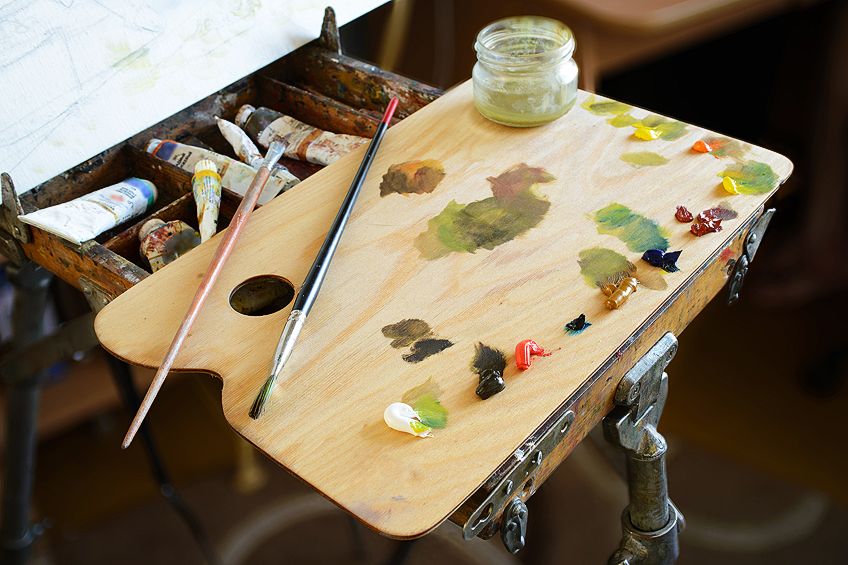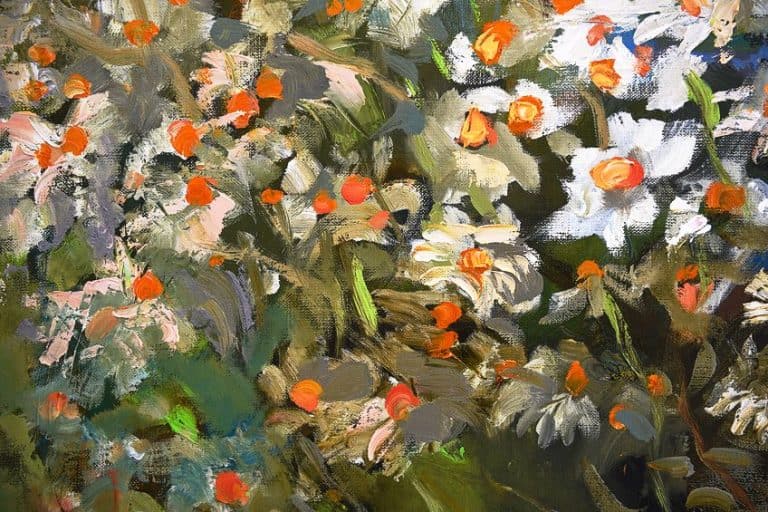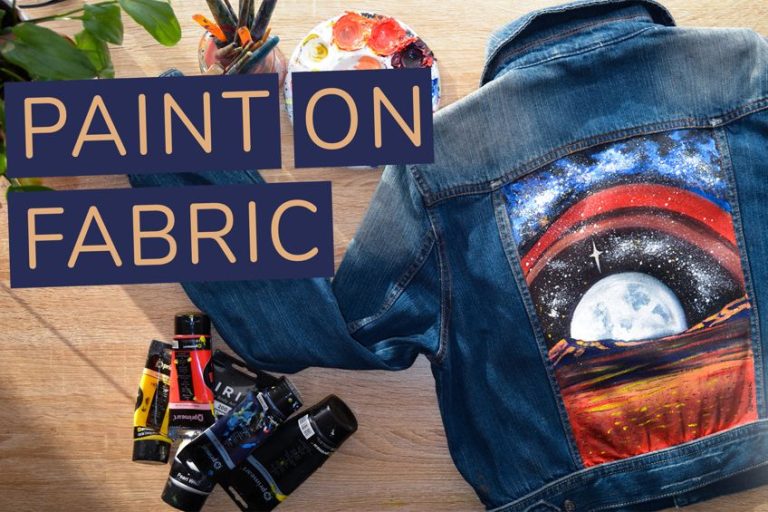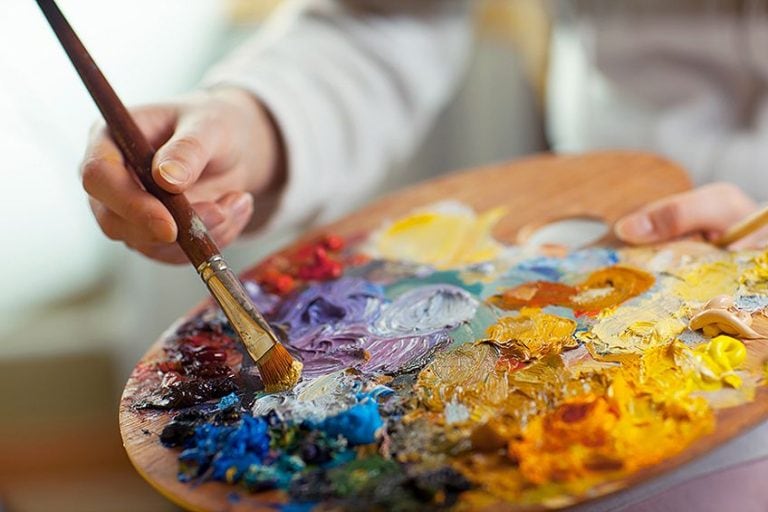How to Make Oil Paint Dry Faster – A Guide to Oil Paint Drying Times
An oil painting is a masterpiece, created with materials that have been used by old masters and modern artists since the 7th century. Oil paints are classical but at the same time contemporary, and although modern oil paintings are vastly different from those of the Renaissance in terms of theme and composition, they do have one thing in common: drying time. Specifically, a very slow drying time. In this article, we are going to show you how to make oil paint dry faster by using various artistic tricks.
Oil Paint Drying Times
You have probably heard the expression “watching paint dry”. Well, it is quite possible that it referred to oil paints! Oil paint is applied in layers, increasing in thickness with each layer, which creates the illusion of depth. That is why oil paintings take months to dry completely, as each layer has to dry. However, there are a number of materials and techniques you can use to ‘touch dry’ your painting.
We will show you how to dry oil paint overnight so that you can move or hang your painting without smearing the paint.
How to Make Oil Paints Dry Faster
Oil paints do not dry the way watercolor paints do, which is by a process of water evaporation. Oil paints dry as a result of oxidation whereby the chemicals in the paints change when they are exposed to air. The slow drying time of oil paints is one of the reasons that oil painters paint in layers, and each layer has to dry before the next one is applied. Thus, for fast-drying oil paint, the chemistry of the paint must be changed, and there are a variety of ways to do this.
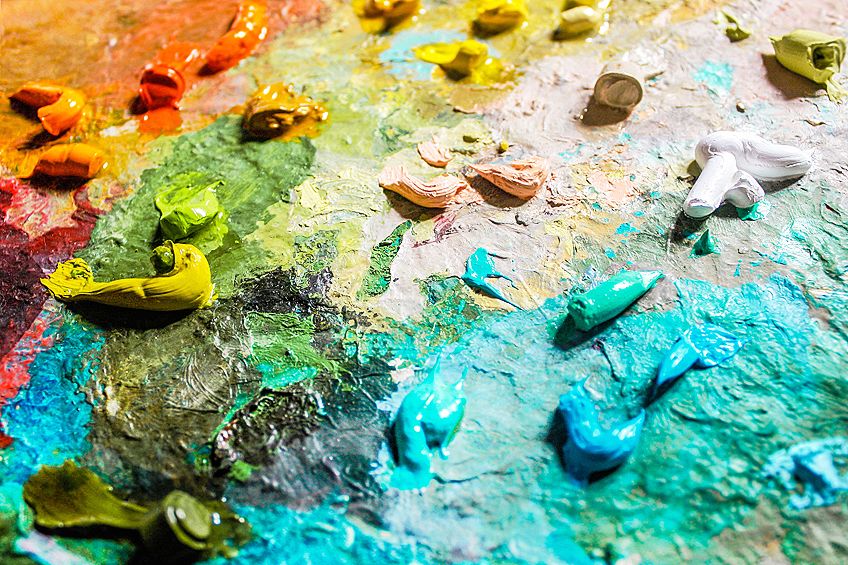
Chemical Drying Agents
One of the best ways to speed up oil paint drying times is by adding a small amount of drying agent to the paint before applying it to the canvas. You can either mix it on your palette with your selected paints or simply use it in the same way you would use water, by dipping your brush into the bottle and applying it to your painting.
There are several drying agents available on the market, and we have listed them below according to their drying time.
Damar Varnish
If you have been wondering how to dry oil paint overnight, using damar varnish is one of the best ways. Damar varnish is made from damar resin crystals mixed with turpentine. It thins and seals oil paints and adds a glossy finish to it. It enables paintings to dry to the touch within 45 minutes, but this can be speeded up if a fan is used to dry the surface of the painting. Remember that varnish emits fumes, so take care not to breathe them in.
Alkyd Paints
Alkyd paints have been in production since the 1920s and are basically oil paints made with an accelerated drying oil that is similar to walnut oil. In fact, a painting done only in alkyds, regardless of how many layers have been applied, will usually dry completely overnight. You can easily mix and match alkyd paints with your oil paints because of the variety of colors available.
Mixing alkyds with oil paints will speed up the drying time of the oils, and your painting should be touch-dry within six to eight hours.
Odorless Mineral Spirits
For fast drying oil paint, one of the best drying agents available is odorless mineral spirits which dries paints between six to eight hours. It is one of the most popular products among artists, not only because of its fast drying time but, as the name suggests, the harmful, strong-smelling solvent has been removed, thus making it safer to use than traditional thinners and turpentine.
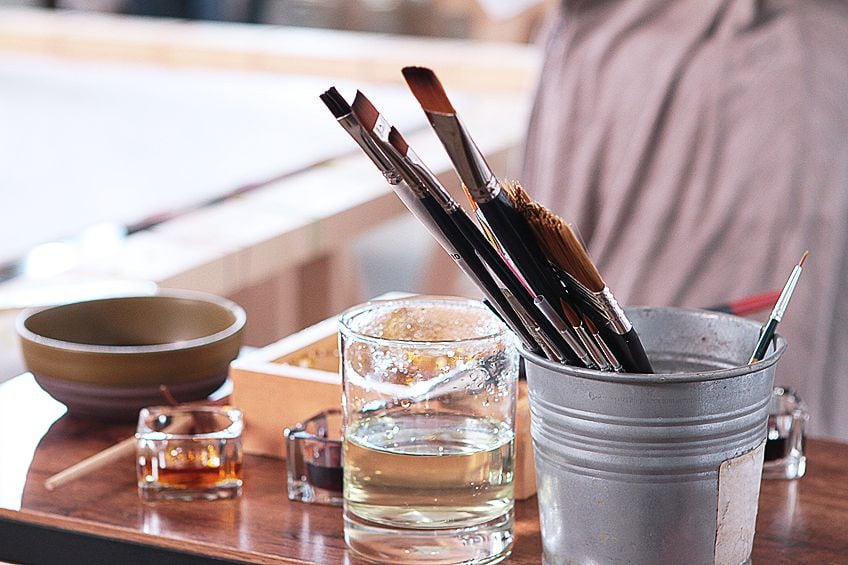
Pure Gum Spirits Turpentine
A cheaper alternative to Gamsol is pure gum spirits turpentine, although it does contain a strong-smelling solvent. This turpentine is distilled from pine trees to create a natural thinner for oil paints and is many artists’ choice of thinners. It also improves the bonding and penetration of most oil paints and is touch-dry within 24 hours.
This is one of the most popular ways of speeding up oil paint drying times.
Galkyd
Galkyd is a fast-drying oil painting medium that touch-dries the thinner layers of your painting in approximately 24 hours. In addition, Galkyd will even out your brush strokes to create an enamel-like surface. It will also thin oil paints and increase their gloss and transparency.
Walnut Alkyd
Walnut Alkyd is another good drying accelerant. Not only does it increase the drying time of your oil paints to within 24 hours, but it also ensures that the layers adhere better to each other. Some artists use walnut alkyd for their first layer of paint and, once it is dry, regular walnut for the remaining layers.
Liquin
For fast drying oil paint, another popular drying agent used by artists is Liquin which is manufactured by Winsor & Newton. An application of liquin will ensure that each layer of paint will be dry to the touch in between one and five days.
Natural Oils
There are four types of natural oils used in oil paints: linseed, safflower, walnut, and poppy. The latter is the slowest to dry (it takes between five to seven days), while linseed is the fastest, drying after 18 to 24 hours.

Linseed Oil
Unrefined or cold-pressed linseed oil has been in use since the 15th century because it is such a versatile medium. (And it is possible that even Michelangelo used linseed oil in his famous paintings!) Like other drying oils, linseed oil reacts to oxygen and polymerizes, in other words, it changes from an oil to a polymer. As the oil undergoes this chemical change, it encases the oil paints and helps to maintain the vibrancy of the colors.
Linseed oil dries within 18 and 24 hours with a flexible film, which means that it is less likely to crack. However, it becomes yellow over time so many artists do not use it with white oil paints.
Walnut Oil
Walnut oil should not be mistaken for walnut alkyd as they are completely different from each other. Walnut oil dries to a hard, glossy finish and is resistant to cracking and yellowing. It dries very slowly, taking four to five days.
Safflower and Poppy Oils
These oils have similar properties and are extremely slow to dry, taking between five and seven days. However, unlike linseed oil, they do not yellow with age which means that they are ideal for mixing with white paint. On the downside, they do not dry to the same strength as linseed oil and can crack with age.
Nevertheless, they can be used successfully for the first (lower) layers of paint.
Thus, we recommend oil paints that contain linseed oil for faster drying. Fortunately most oil paints these days are made with linseed oil, but there are some that are made solely with walnut or safflower oil. We recommend that you check the ingredients of the oil paints before purchasing them.
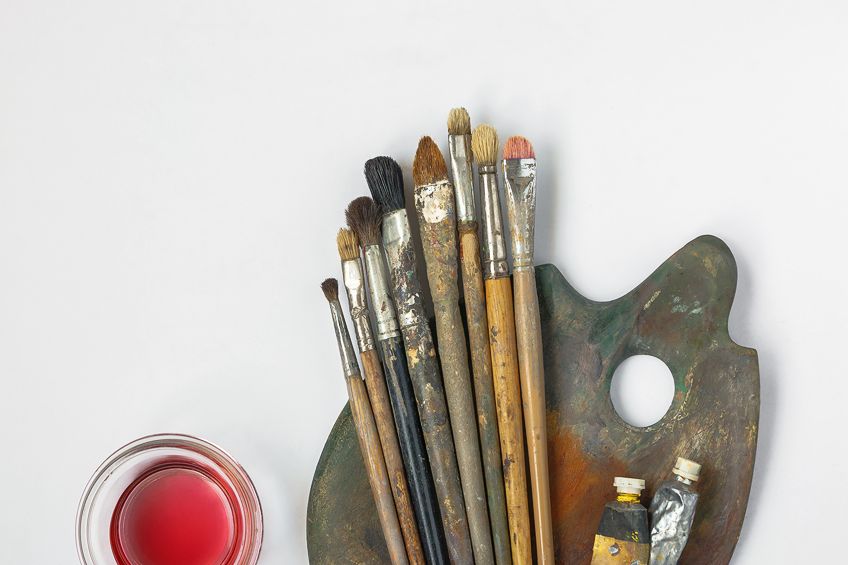
A Summary of Chemical and Oil Additives Drying Times
As we have shown you, there are several types of additives you can use with your oil paints to ensure that they dry faster than they would without additives. Oil paint on its own will take approximately six to eight months to dry completely. The following table sets out the drying times of all the additives we have mentioned in this article.
| Type of Additive | Drying Time |
| Damar varnish | 30-45 minutes |
| Mineral Spirits | 6-8 hours |
| Alkyd paints | 16 hours |
| Linseed oil | 18-24 hours |
| Galkyd | 24 hours |
| Walnut Galkyd | 24 hours |
| Pure gum spirits turpentine | 24 hours |
| Liquin | 24 to 72 hours |
| Safflower oil | 72 hours |
| Walnut oil | 4-5 days |
| Poppyseed oil | 5-7 days |
Materials That Affect Drying Time
In addition to manipulating your oil paints with chemical dryers and other fast-drying agents, there are a few types of materials you can use that will speed up oil paint drying times. In this section, we will show you how to dry oil paint fast by using specific art materials.
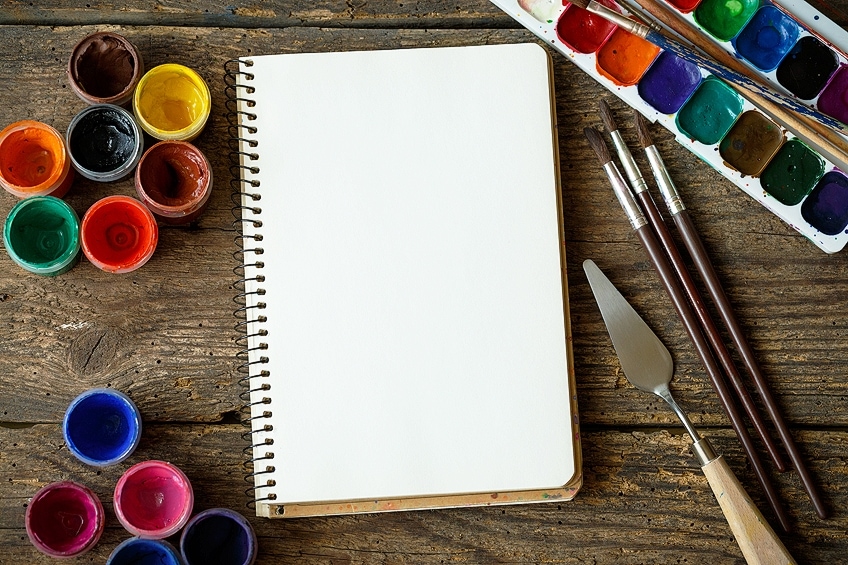
Primed Surfaces
Artists are not restricted to using the type of canvases primed by titanium oil that is usually found in art stores. There are other types of primed surfaces that are suitable, if not better, for oil painting. But whichever canvas you select, you should ensure that the surface is completely flat and smooth otherwise your paint will go on unevenly, and that will also slow down the rate of drying.
Gesso is a white undercoat that is painted onto the surface to prime it ahead of painting.
There are two types of gesso. The first, traditional, is specifically for hard and inflexible surfaces such as wood panels. Traditional gesso is quite brittle and therefore it is not suitable for surfaces that can be easily bent as the gesso will crack, thus ruining the painting surface.
The second type of gesso is acrylic gesso which is simply an acrylic primer that, when dried, is able to withstand movement of the canvas surface without cracking or crumbling. This is the most popular type of gesso used by artists.
Lead-Primed Linen
Linen primed with two or three coats of lead makes for a smooth and luxurious painting surface. Although it is non-absorbent, lead enables oil paints to dry a lot quicker than it would on a normal primed canvas. And because it is non-absorbent, it clings to wet paint which means that you do not have to wait for each layer to dry before applying the next layer.
In addition, it does not stain and can be completely wiped away if necessary.
The downside to lead-primed linen is that lead is toxic, so it must be handled with the utmost care. For that reason, it is not as easily available as other primed canvases and is a lot more expensive. In addition, the white surface tends to turn yellow over time.
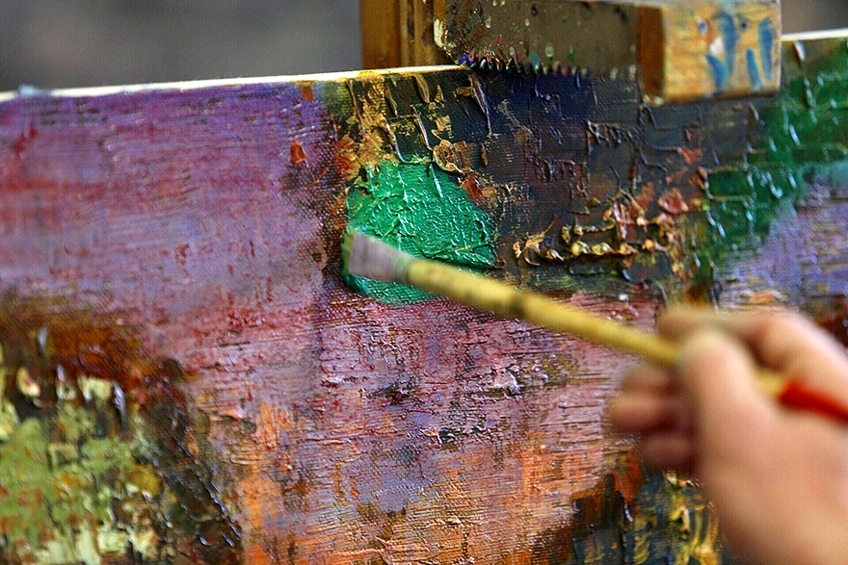
How to Make Oil Paint Dry Faster With Different Painting Techniques
Besides using chemicals and different materials to ensure fast drying oil paint, you can also apply different painting techniques that will accelerate the drying time of your oil painting. Bear in mind, however, that as we have mentioned before, these techniques will only make the first few layers of your painting dry faster because oils, due to their chemical makeup, take months to dry completely.
Apply the “Fat-Over-Lean” Principle
We have discussed how to thin down your oil paints using drying agents such as Liquin or Galkyd, or mixing a bit of linseed oil with your paints on your palette. Once you have done that, you can implement the “fat over lean” principle, which is to apply the first layers of paint thinly and build up the thickness, or the amount of paint, with each layer. Your first few layers of paint should have the least amount of oil content of other paints.
If you have used a thinning agent in your paints, you will find that the first few layers of paint will enhance the drying time of the subsequent layers.
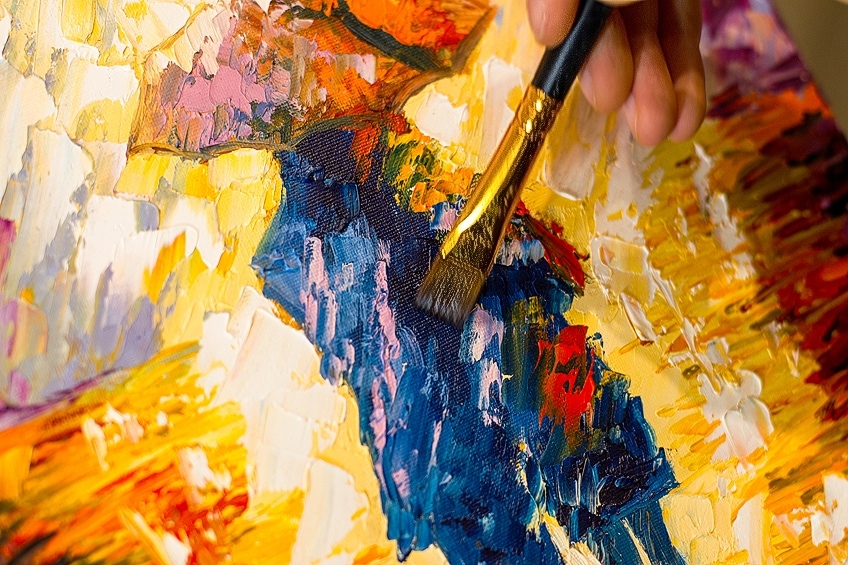
Use Quick-Drying Pigments
Not all oil paints are created equal. Some pigments dry a lot faster than others. Therefore, by selecting the right colors you can speed up the drying time of your painting. The following table lists fast and slow drying oil paint pigments.
| Fast-Drying Pigments | Slow-Drying Pigments |
| Burnt and Raw Sienna | Alizarin Crimson |
| Burnt and Raw Umber | Black colors: Carbon Black, Charcoal Black, Ivory Black, and Lamp Black |
| Chrome Red and Chrome Yellow | Cadmium colors: green, red, and yellow |
| Cobalt colors: Cobalt Blue, Cobalt Yellow, and Genuine Aureolin | Sap Green |
| Colors that contain lead: Cremnitz White, Flake White, and Lead White | Titanium White |
| Manganese Black, Manganese Blue, and Manganese Violet | Vandyke Brown |
| Naples Yellow | Vermillion |
| Prussian Blue | Zinc White |
We are not suggesting that you stick solely to the quick-drying colors. On the contrary, if you want to apply a color that you know is slow drying, why not mix the appropriate fast-drying colors to make the color you are looking for? This way you can create numerous color combinations that, were you to otherwise select the pure color, would dry much quicker.
For example, if you are using black, all the varieties of which are slow-drying, you could add a fast-drying Prussian Blue, or a sienna or umber. These colors will not affect the intensity of the black but will ensure that it dries more quickly.
However, you should bear in mind that some manufacturers make the faster drying colors with a slow-drying oil such as poppy or safflower specifically to slow down the drying time. It is therefore a good habit to check the makeup of the oil paints you require before buying them.
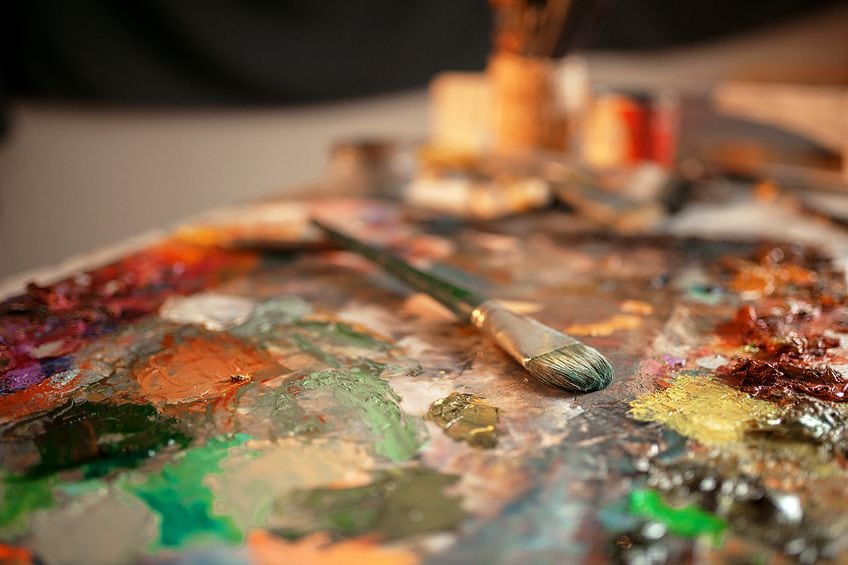
Pick a Limited Palette
If you are wondering how to dry oil paint fast because you are working to a deadline, or you need to transport your painting and do not want to risk tampering with the painting before the top layer has dried, you should consider working with a limited palette. In other words, only use oil paints that you know dry quickly.
And as we said earlier, if you do not have a particular color in your selection of oil paints, you can mix certain quick-drying colors to make the color you want.
Environmental Factors That Ensure Fast Drying Oil Paint
We have discussed in detail how to make oil paint dry faster. Your environment also has a role to play, and although you cannot control the weather, there are quite a few environmental factors you can employ that will help to dry your oil painting more quickly.
A Warm Room
It goes without saying that wet things dry more quickly in a warm environment, and that means oil paints too. The minimum temperature of the room should be between 70°F to 75°F (21°C to 24°C), although if you can turn up the heat it would speed up the drying time of your painting (but it should not be too hot to be uncomfortable for you to work in).
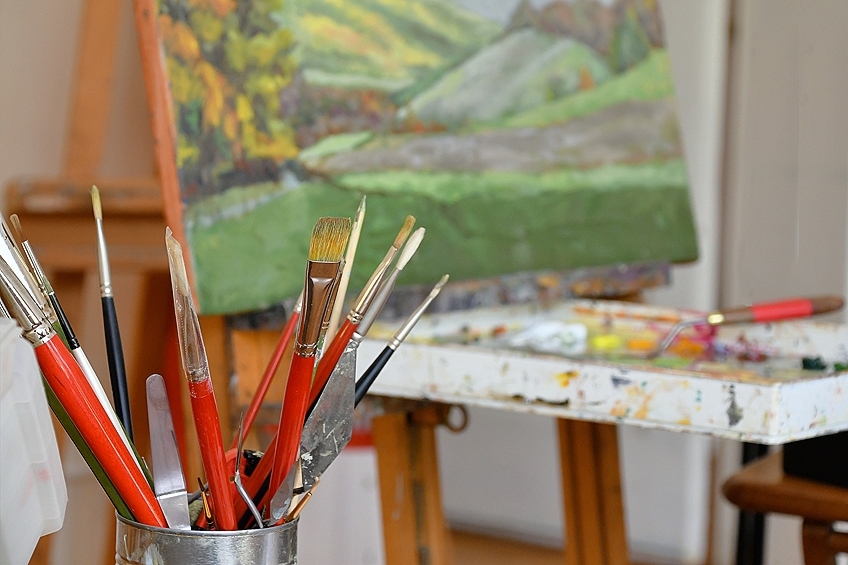
Use a Dehumidifier
Although the room should be warm, it should not be humid as oil paints dry faster in dry air. Thus, if you live in a humid climate you should get yourself a dehumidifier to put close to your painting. Oil paints dry by oxidation, meaning that the chemicals in the oil paints react to oxygen and then harden.
Utilize Sun-Facing Windows
If the room in which you are painting has windows that receive direct sunlight, you can prop your painting on the windowsill to speed up the oil paint drying time. Place the canvas so that the back faces the window, otherwise, direct sunlight might affect the colors of the paints. Alternatively, place the painting into a cardboard box so that the sun does not shine directly onto the painted surface.
Circulate the Air
The natural thing to do when drying an oil painting is to leave the windows open to enable the air to circulate. However, this may cause dust particles and other small bits of debris from outside to stick to the painting’s surface, and you do not want that to happen. Instead, keep the windows closed and put a fan in the room on a low to medium setting.
For the best results, stand the fan at least one and a half meters away from the painting.

Use a Heat Gun
In addition to putting your painting in a warm room to dry, you can speed up the drying process by using a heat gun on your painting. You do not want your painting to crack, however, so the maximum temperature you should set the heat gun on is 130°F (54°C). Stand a few inches away from your painting when you use the heat gun, and move it slowly across the painting to ensure that you have maximum coverage. Do not allow the nozzle of the heat gun to touch the painting as it will burn the painting.
We have shown you how to dry oil paints fast by using natural and chemical against, as well as certain artists’ materials that you would ordinarily use. You may have some ideas of your own about oil paint drying time, too. We suggest you try different methods until you find the one that suits you best.
Frequently Asked Questions
How Can I Make My Oil Painting Dry Quickly in a Cold Climate?
You can turn your thermostat up to 86°F (30°C), or higher if you are comfortable with the temperature. You could also put a fan in the room on a low to medium setting and set it to blow directly onto the painting. Before you switch on the fan, ensure that the blades and safety cover are clean and free of dust.
Are Chemical Drying Agents Harmful to People or Pets?
Most drying agents available on the market these days are not harmful, although care must be taken when using them. However, some, like turpentine, have a strong odor and emit fumes, but there are odor- and solvent-free alternatives available. As a rule of thumb, keep children and pets away from the room or area in which you are painting.
Is It Better to Use Natural Oils Rather Than Chemical Additives to Make Oil Paints Dry Faster?
It is entirely a matter of personal choice. However, if you want to ensure that your painting dries in as short a time as possible, the best medium to use is damar varnish which dries paintings to the touch within 45 minutes. Linseed oil takes longer – between 18 and 24 hours – but is the most popular additive amongst artists.
In 2005, Charlene completed her Wellness Diplomas in Therapeutic Aromatherapy and Reflexology from the International School of Reflexology and Meridian Therapy. She worked for a company offering corporate wellness programs for a couple of years, before opening up her own therapy practice. It was in 2015 that a friend, who was a digital marketer, asked her to join her company as a content creator, and this is where she found her excitement for writing.
Since joining the content writing world, she has gained a lot of experience over the years writing on a diverse selection of topics, from beauty, health, wellness, travel, and more. Due to various circumstances, she had to close her therapy practice and is now a full-time freelance writer. Being a creative person, she could not pass up the opportunity to contribute to the Art in Context team, where is was in her element, writing about a variety of art and craft topics. Contributing articles for over three years now, her knowledge in this area has grown, and she has gotten to explore her creativity and improve her research and writing skills.
Charlene Lewis has been working for artincontext.org since the relaunch in 2020. She is an experienced writer and mainly focuses on the topics of color theory, painting and drawing.
Learn more about Charlene Lewis and the Art in Context Team.


